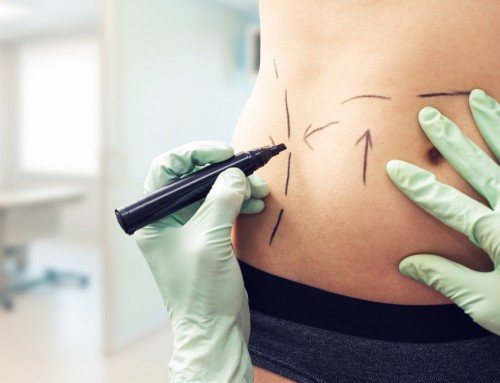Otoplasty (ear reshaping) Frequently Asked Questions
How long will the ears take to recover?
It takes at least six weeks for half of the swelling to go away, six months for the other half, and a year for the final shape to be achieved. However, your ears will look significantly better in 2-3 weeks. After this brief length of time, the shape and contour will be easily visible and appreciated.
What are some of the issues that could arise?
Every surgery has some risks, although the risks associated with ear reshaping are usually minor. Bleeding, infection, slow healing, numbness, thickened scarring behind the ear, and visualization of the cartilage edge that was sliced to modify the ear are only a few of them. If the ear is pulled on before it has fully healed, one of the most serious problems can arise. The form will be adjusted if this occurs.
What’s the best way to achieve the new ear shape?
The entire ear is sculpted and rebuilt using a combination of procedures. The flat upper region of the ear is customized with threads or stitches to make a pleasant curvature, and portions of the protruding cartilage are removed. Stitches are also permanently implanted in the ear cartilage to strengthen and stabilize it.
What if the threads or stitches come undone?
Excessive pulling or trauma may cause one or more of these stitches to break. This might cause some of the ear deformities to reappear, necessitating additional surgical intervention. However, the permanent removal of cartilage determines a large portion of the new shape, allowing the ear to preserve a large portion of its new position and shape.
When is the best time to have my surgery?
It is advised that you are in good mental and physical fitness, with good skin health. This operation is frequently performed on children aged 6 and up. The ear is almost fully developed by the time the child reaches the age of five. The ability to collaborate after the procedure is the deciding factor. We aim to modify the ears before any potential psychological issues arise, thus sooner is better than later. Adults who have had otoplasty surgery, on the other hand, are exceedingly pleased with their new appearance.
What will I require prior to surgery?
You may be requested to see your family physician for a medical evaluation to ensure that you are in the greatest possible health.
Anesthesia Method:
You will be mildly sedated to ensure your comfort throughout the procedure. Once you’re sleeping, a local anesthetic will be injected into your skin so you don’t feel anything and the quantity of drugs you get during the procedure is kept to a minimum. Your heart rate, blood pressure, and oxygen intake will all be improved by putting you to sleep.
How long will the operation last?
Many things must be done before the surgery can begin, including cleaning and prepping the region, ensuring that your body is sufficiently padded, and placing your legs in special boots to compress them during the procedure. Your ears are cleaned and a particular dressing is applied at the conclusion of surgery. However, rest assured that sleeping for a few hours is typically considered to be fairly safe, we also wait in recovery following the procedure to make sure everything is okay before leaving.
What can I anticipate?
The ears must be balanced in order for them to resemble one another. They’ll never be the same. In reality, one may protrude more or be longer or thinner than the other. Some of these characteristics are related to the amount of cartilage and skin that can be reshaped. In general, the result is a really attractive appearance. The projecting ears are positioned closer to the head’s sides. Women and men of all ages realize that the look of prominent ears no longer holds them back. Hairstyles are changed to highlight the ears, and hats with exposed ears are now worn with pride. After the surgery, you will have a grin that will last a lifetime.
Will I swell and bruise after surgery?
Swelling and bruising are common side effects of surgery. Bruising and discoloration usually fade after 2 to 3 weeks, turning green, yellow, and then disappearing.
What happened to the scars?
On the bottom of the back of the ear, and occasionally on the front surface within one of the folds, there is a scar…
How long will I be wearing a bandage?
For the first week, it’s critical to keep the ears in place. A thick dressing is worn around your head to protect and cushion your ears. During the first 7-10 days, the dressing will be changed. For the next 3-4 weeks, you’ll need to sleep with a headband and pads over your ears. For 7-10 days, you may need to wear a headband and pads during the day.
When will I be able to shower?
Shower the next day as long as you keep your head dry. After 7-10 days, the ears may become damp. To keep your swelling down, don’t take a bath until 3 weeks after surgery.
Will my ears be irritated?
In most cases, there is very minor discomfort. There will be some soreness, but it should be minor and can be eased with Tylenol or a pain medicine recommended for you.
Is it true that I’ll be taking antibiotics?
Yes, preventing an ear infection is quite important. Antibiotics will be administered to you during surgery and will be continued for 4-7 days afterward.
When will I be able to resume my normal activities?
For the first 7-10 days, it’s best to unwind. The location of bruising is commonly around the ears. It’s fine to see your dearest friends after 10 days, but I recommend waiting at least 2 weeks before meeting new people. You will appear presentable after two weeks. You will appear significantly better after 3 weeks than you did before surgery, but it will take another 3-4 weeks for 50% of the swelling to diminish. Exercising or increasing your heart rate for the first three weeks after surgery is not recommended. This will aid in reducing swelling and speeding up the healing process. Similarly, you should avoid contact activities for the first 3-6 months to avoid injuring or bending your ears.
What can I do to hasten my recovery?
We will provide you with guidelines that will tell you which medications to avoid and which vitamins to take. Allowing no one to smoke in your presence for one week before going and after surgery, applying ice and cool compresses frequently, relaxing, eating a low-salt diet, and maintaining a happy attitude will all help you heal faster.
Will smoking have an impact on my recovery?
Clearly, this is a question for adults: Yes, each cigarette lasts 12 hours and affects the body’s blood vessels, as well as being harmful. Smoking causes the skin to heal slowly, and the issues that come with it are numerous. Even secondhand smoke in the weeks leading up to and after surgery will have a negative impact on your results. Before and after every procedure, you must come to a complete stop. Please refrain from smoking in the presence of children who are undergoing or have recently completed surgery.
When do you think I’ll see you again?
You will return to the office in 6-8 days, depending on the combination of surgeries. There will be several visits to review your progress and assist your healing requirements, with three to four visits included in your treatment.








